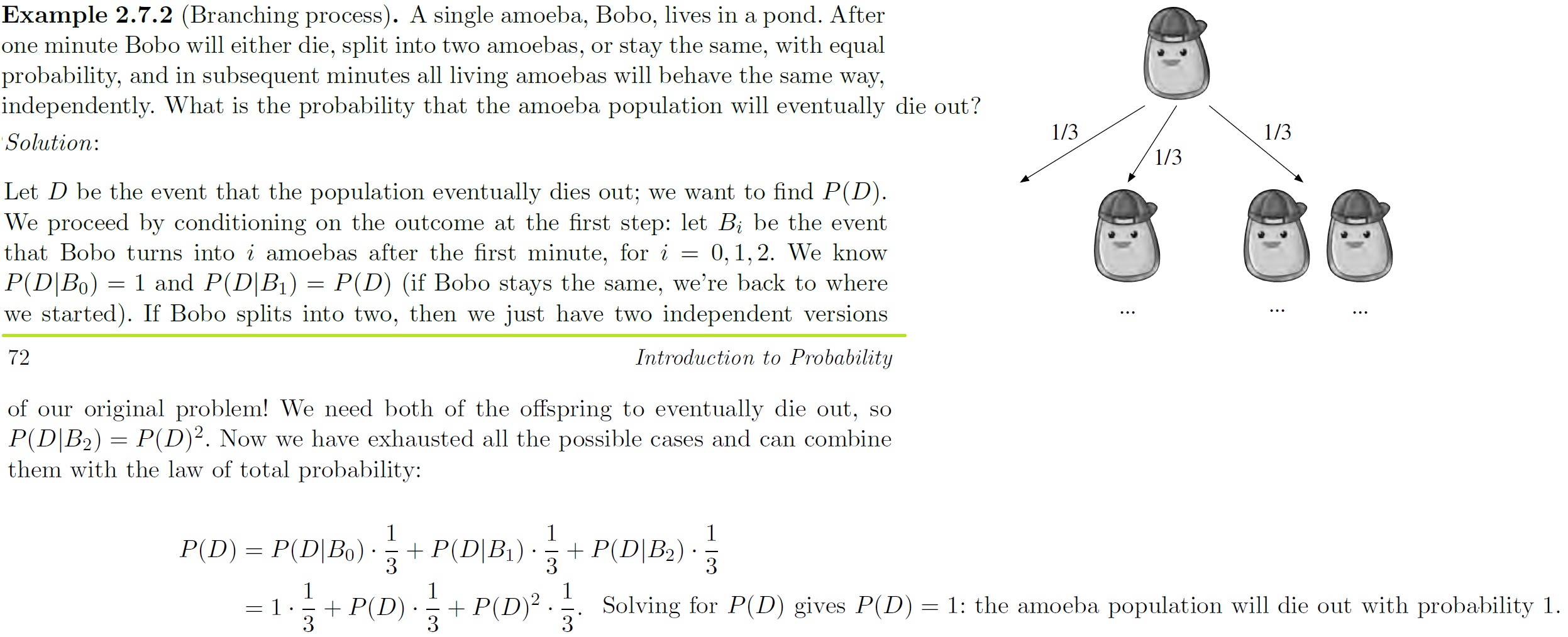I have no questions on the solution or the algebra, but even after re-reading the solution, I still can't fathom or intuit why $P(D) = 1$ from the problem statement. Even now, I couldn't have divined or foretold that $P(D) = 1$!

>The strategy of first-step analysis works here because the problem is self-similar in
nature: when Bobo continues as a single amoeba or splits into two, we end up with
another version or another two versions of our original problem. Conditioning on
the first step allows us to express P(D) in terms of itself. □
Blitzstein. *Introduction to Probability* (2019 2 ed). p 72.


















